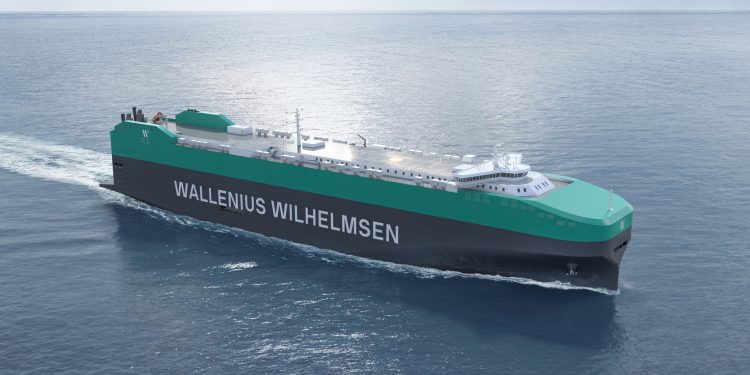Wallenius Wilhelmsen is launching a re-engineered bunker adjustment factor, BAF2.0, to prepare for future fuels on the path to net-zero emissions by 2040. BAF2.0 will streamline and simplify the adaptation of alternative fuels.
As explained, Bunker Adjustment Factor (BAF) is a pricing mechanism used to adjust freight rates based on fuel price fluctuations. Wallenius Wilhelmsen’s BAF2.0 is not looking to re-invent the wheel, just improve it to fit a future that will include several fuel types like biofuel, bio-LNG, methanol and ammonia.
BAF2.0 will work as before capturing fuel price fluctuations, but now including a future fuel mix. BAF2.0 therefore ensures cost predictability of the fuel mix during the transition to net-zero fuels, Wallenius Wilhelmsen notes.
The re-engineered BAF is important in our net zero journey. We believe delaying the switch to net zero fuels will only increase costs later,
… said Xavier Leroi, COO Shipping Services at Wallenius Wilhelmsen, adding that in a world where the cost of the green transition is talked about everywhere, the multi-fuel BAF will give cost transparency upfront and at a fair level.
BAF2.0 integrates multiple fuel types into a single charge. Wallenius Wilhelmsen’s fuel mix will gradually phase out fossil fuels like VLSFO and MGO in favor of alternative fuel such as biofuel, bio-LNG, and methanol.
Starting 1st January 2025, BAF2.0 will apply to all new ocean business.
A re-engineered BAF that is prepared for future fuels will give our customers increased predictability of fuel costs in a landscape where fuel mix will only be more complicated. A new BAF also allows us, with our customers, to ensure compliance with environmental regulations as they become stricter,
… commented Pia Synnerman, Chief Customer Officer at Wallenius Wilhelmsen.

































































